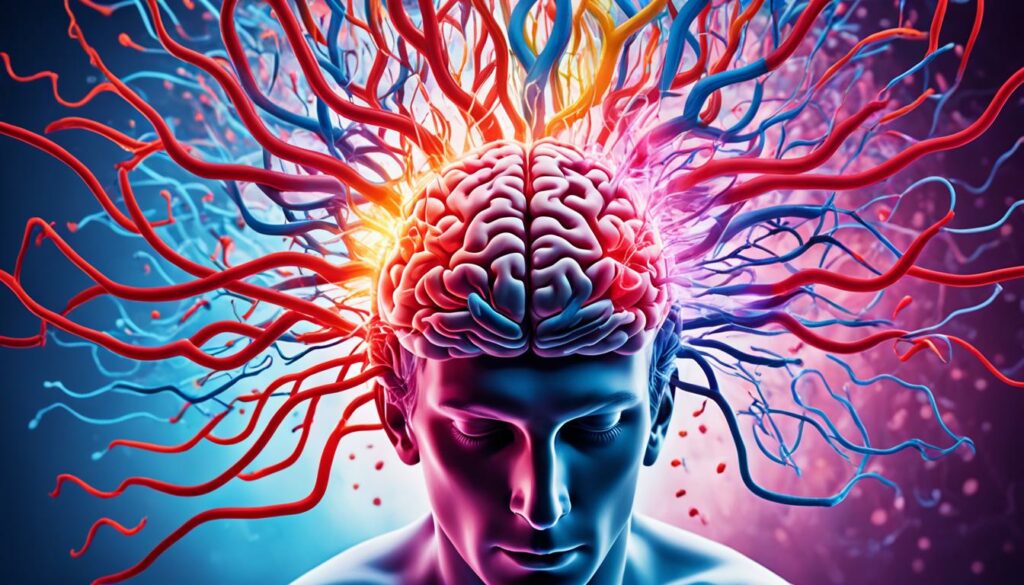Understanding Teenage Behavior and Trends
Teenagers are a unique group with their own set of challenges and characteristics. The teenage years, also known as adolescence, are a period of significant growth and development, both physically and emotionally. During this time, teenagers go through various changes that shape their behavior, emotions, and overall outlook on life.
Adolescent behavior is influenced by a combination of factors, including biological, psychological, and social influences. The ongoing development of their brains plays a crucial role in shaping their behavior and decision-making abilities. Understanding the teenage brain and the factors that contribute to their behavior can help parents, educators, and policymakers provide the necessary support and guidance.
Teenagers are often driven by their emotions and seek to establish their identity within the context of youth culture. They may experience intense emotions, mood swings, and conflicts with authority figures. It is important to recognize that these emotional fluctuations are a normal part of teenage development and should be handled with understanding and patience.
Key Takeaways:
- Adolescent behavior is influenced by biological, psychological, and social factors.
- The teenage brain undergoes ongoing development, which affects decision-making abilities.
- Teenagers may experience intense emotions, mood swings, and conflicts with authority figures.
- Understanding teenage behavior is essential for providing support and guidance.
- Parents, educators, and policymakers play a crucial role in shaping positive outcomes for teenagers.
The Teenage Brain: A Biological Explanation for Behavior

Understanding teenage behavior requires an examination of the biological changes occurring in the teenage brain. Scientists have discovered that the teenage brain operates differently from that of adults, particularly when it comes to decision-making and problem-solving. This disparity can be attributed to the ongoing development and maturation of the brain during adolescence.
Two regions of the brain, the amygdala and the frontal cortex, play crucial roles in shaping teenage behavior. The amygdala, often associated with emotions and impulsivity, tends to guide teenagers’ actions more prominently than the logical and reasoning-driven frontal cortex. As a result, teenagers often have difficulty exercising impulse control and are more prone to engage in risky behavior.
“The emotional and reactive amygdala tends to guide their actions more than the logical frontal cortex.”
During the teenage years, the brain undergoes significant structural changes that contribute to the development of thoughts, actions, and behavior. The myelin, a layer that facilitates cell communication, continues to form, allowing for more efficient transmission of signals between brain cells. In addition, there is a proliferation of neural connections between different regions of the brain, enhancing coordination.
| Brain Region | Function |
|---|---|
| Amygdala | Responsible for emotions, fear, and impulsivity |
| Frontal Cortex | Involved in reasoning, decision-making, and impulse control |
| Myelin Development | Facilitates efficient cell communication |
| Increased Neural Connections | Enhances coordination in thoughts, actions, and behavior |
Typical vs. Atypical Teen Behavior

Parenting a teenager can be challenging, as their behavior may seem different from what parents expect. However, it is important to understand that teenage behavior is often influenced by the ongoing development of their brains. Teenagers may experience intense emotions, mood swings, and engage in impulsive and reckless behavior. It is crucial for parents to differentiate between normal teenage behavior and behavior that may require intervention.
Normal Teen Behavior
Understanding normal teen behavior is essential for parents to establish effective communication and support systems.
- Moodiness: Teenagers often experience mood swings due to hormonal changes and the challenges of navigating adolescence.
- Impulsivity: Their developing brains may lead to impulsive decision-making, as the frontal cortex responsible for reasoning and decision-making is still maturing.
- Recklessness: Teens may take risks and engage in adventurous activities as they seek independence and explore their boundaries.
- Communication: They may also struggle with effective communication, which can manifest as withdrawing or expressing themselves in unconventional ways.
“Parenting a teenager means understanding their behavior, accepting their individuality, and providing guidance when needed. It’s important not to label their normal behavior as something abnormal.”
Atypical Teen Behavior
While most teenage behavior falls within the range of normalcy, there are instances when it may be atypical and require attention:
- Extreme mood swings: Severe and persistent mood swings that interfere with daily functioning may indicate underlying mental health issues.
- Risky behavior: Engaging in extremely reckless or dangerous activities without regard for consequences may be a cause for concern.
- Social withdrawal: Isolation and withdrawal from activities, friends, or family may be indicators of underlying emotional or psychological challenges.
- Sudden changes in behavior: Significant shifts in behavior, such as sudden aggression or impulsivity, may warrant further investigation.
Recognizing atypical teen behavior is crucial to provide appropriate support and intervention for teenagers who may be struggling with mental health issues, substance abuse, or other underlying problems.
By understanding the differences between typical and atypical teenage behavior, parents can navigate the challenges of parenting with empathy and seek professional help when necessary. Open communication, fostering a supportive environment, and staying informed about adolescent development can contribute to a healthy and positive parent-teen relationship.
Trends in Teenage Behavior and Outcomes

Teenagers today are experiencing a unique set of opportunities and challenges that differ from previous generations. Let’s explore some of the notable trends in teenage behavior and outcomes:
1. Increased Life Expectancy
Teenagers today are benefiting from improved healthcare and living conditions, leading to increased life expectancies. This positive trend reflects advancements in medical technology, increased access to healthcare services, and healthier lifestyle choices.
2. Educational Attainment
The importance of education is emphasized more than ever before. African-American and white teens are completing high school at similar rates, demonstrating progress in reducing racial disparities. However, challenges related to income and race still exist when it comes to college attendance rates.
3. Rising College Attendance
The desire for higher education is on the rise among teenagers. Many see college as a pathway to better career prospects and economic stability. Although college attendance rates have increased, it is essential to address disparities to ensure equal access and opportunities for all.
4. Teen Community Service
Teenagers today are increasingly engaging in community service activities. This involvement not only benefits the community but also has positive effects on academic performance and social development. It fosters empathy, leadership skills, and a sense of responsibility, contributing to well-rounded individuals.
5. Concerns about Nutrition and Smoking
While there have been positive trends in various aspects of teenage behavior, there are still challenges that require attention. Poor nutrition and high smoking rates among teenagers remain concerning. Efforts should be made to promote healthy eating habits and decrease tobacco use, facilitating better long-term health outcomes.
6. Addressing Teen Homicides
Teen homicides continue to be a significant issue in many communities. A comprehensive approach involving community organizations, law enforcement, and educational institutions is crucial to address the underlying causes and promote a safe environment for teenagers.
7. Teen Birth Rates
Reducing teen birth rates is a priority to ensure better outcomes for young parents and their children. It requires comprehensive sex education, access to contraception, and support for teens to make informed decisions regarding their sexual health.
Overall, while there are several positive trends in teenage behavior and outcomes, there are also areas that require continued attention and action. By addressing these challenges and building on the opportunities available to teenagers, we can foster a healthier, more successful future for the next generation.
The Importance of Parent-Teen Relationships
Parental involvement plays a significant role in helping teenagers navigate challenges and make positive choices. Research shows that teens who have close relationships with their parents are less likely to engage in risky behaviors such as smoking, drinking, drug use, violence, and sexual activity. Additionally, teens who feel connected to their parents are more likely to excel academically.
When parents establish close bonds with their teenagers, they create a sense of trust and support that promotes healthy decision-making and risk prevention. By actively participating in their teen’s life and maintaining open lines of communication, parents can better understand their teenager’s struggles and provide guidance and guidance when needed.
The Impact on Academic Achievement
Close parent-teen relationships have been linked to improved academic performance. When teenagers feel supported and emotionally connected to their parents, they are more motivated to succeed in school. According to a study conducted by the University of Michigan, adolescents who have regular family dinners together score higher on academic tests and achieve better grades compared to those who don’t.
One possible explanation for this correlation is that eating dinner together provides an opportunity for meaningful conversations and bonding. These interactions allow parents to provide guidance, discuss academic goals, and offer support for their teen’s educational journey.
Preventing Risky Behaviors
Strong parent-teen relationships are also associated with a decreased likelihood of engaging in risky behaviors. Research shows that teenagers who have positive connections with their parents are less likely to experiment with smoking, drinking, drug use, and sexual activity.
According to a study published in the Journal of Adolescent Health, parental involvement has a preventive effect on various risky behaviors. Teens who reported high levels of parental involvement were less likely to engage in substance abuse, experience violence, or have suicidal thoughts and attempts.
“Studies consistently show that eating dinner together as a family can have a profound impact on reducing the risk of risky behaviors and promoting overall well-being.” – Dr. Sarah Anderson, Child Development Specialist
The Role of Family Dinners
One simple but effective way to strengthen the parent-teen relationship is by regularly eating dinner together as a family. Family dinners foster a sense of closeness and provide an opportunity for open communication. They create a space for parents and teenagers to discuss the challenges of adolescence and provide support and guidance.
In addition to fostering parent-teen bonds, family dinners have been found to have numerous benefits for teenagers. Research shows that regular family dinners are associated with lower rates of drug use, reduced risk of violence, improved mental health, and increased self-esteem.
| Risky Behavior | Parent-Teen Relationship |
|---|---|
| Smoking | Less likely to smoke |
| Drinking | Less likely to engage in excessive drinking |
| Drug use | Less likely to experiment with drugs |
| Violence | Less likely to engage in violent behavior |
| Sexual activity | Less likely to engage in early sexual activity |
| Suicidal thoughts | Less likely to experience suicidal thoughts |
| Suicide attempts | Less likely to attempt suicide |
Investing time and effort into building and maintaining a strong parent-teen relationship can significantly contribute to positive outcomes for teenagers. By prioritizing parental involvement, fostering close bonds, and engaging in activities such as eating dinner together, parents can create a supportive environment that promotes academic achievement, prevents risky behaviors, and strengthens the overall well-being of their teenage children.
Expanding Opportunities for Today’s Teens

Teens today have more opportunities for economic success through education, work, and community service. The economic rewards of education are higher than ever, and teens are enrolling in college at record rates. Work during high school can provide income and valuable skills. Community service enhances academic and social outcomes for teens. However, it is important for society to support families by providing meaningful activities for teens and allowing for flexible family time.
Economic Success through Education
Education plays a crucial role in opening doors to economic success for today’s teens. With technological advancements and a changing job market, a high school diploma is no longer enough to secure well-paying jobs. Teens are recognizing this and are enrolling in college at record rates to acquire the skills and knowledge needed for high-demand careers. By pursuing higher education, teens increase their earning potential and set themselves up for long-term financial stability.
Work Experience: More than Just a Paycheck
Work during high school not only provides teens with much-needed income but also equips them with valuable skills for future success. Part-time jobs teach teens responsibility, time management, and social skills, all of which are highly sought after by employers. Furthermore, work experience on a resume demonstrates a strong work ethic and dedication to personal growth. Teens who work during high school gain a competitive edge in the job market and develop a sense of independence and self-reliance.
The Power of Community Service
Engaging in community service not only benefits the community but also has a positive impact on the academic and social outcomes of teens. Through community service, teens develop empathy, social responsibility, and a sense of purpose. These qualities not only enhance their personal growth but also make them more attractive to colleges and future employers. Additionally, community service provides valuable networking opportunities, allowing teens to connect with mentors and professionals who can further guide them towards economic success.
However, it is important for society to recognize the value of flexible family time in promoting the overall well-being of teens. Academic and extracurricular activities are important, but a healthy balance between work, education, community service, and family time is crucial for the holistic development of today’s teens. By providing support systems and allowing for flexible scheduling, we can create an environment that values both productive pursuits and quality time spent with loved ones.
Challenges for Teens in the 21st Century
Despite the progress made in addressing various aspects of teen behavior and outcomes in recent years, teenagers in the 21st century face unique challenges that require attention and support. These challenges encompass dangerous behavior, such as teenage violence and drug use, as well as the risks associated with social media, body image, and mental health.
The rise of dangerous behavior among teenagers, including teenage violence and drug use, is a cause for concern. It is essential to address the root causes of these behaviors and provide interventions and support systems that promote healthier alternatives.
Social media has become an integral part of teenagers’ lives, but it also poses risks to their well-being. The constant exposure to unrealistic beauty standards and curated lifestyles can significantly impact their body image and self-esteem. It is crucial to educate teenagers about healthy body image and promote positive online experiences.
Mental health is another pressing issue among today’s teens. The pressures of academic performance, social expectations, and the challenges of adolescence can take a toll on their mental well-being. Providing access to mental health resources, destigmatizing seeking help, and promoting open conversations about mental health are crucial steps in supporting teenagers.
Teenage Violence Statistics:
| Year | Incidents | |
|---|---|---|
| Physical Assault | 2020 | 10,000+ |
| Weapon Possession | 2020 | 5,000+ |
| Domestic Violence | 2020 | 3,000+ |
Efforts should also be focused on preventing teen pregnancy, substance abuse, and engaging in risky behaviors that can have long-term consequences for their physical and emotional well-being. By providing comprehensive sex education and promoting healthy decision-making skills, we can empower teenagers to make informed choices and reduce the rates of teenage pregnancy and substance abuse.
Social support systems, educational programs, and community initiatives play a crucial role in addressing these challenges. Collaborative efforts involving parents, schools, healthcare providers, and policymakers are necessary to ensure that teenagers receive the necessary resources and support to navigate these complex issues.
In the words of renowned psychologist Dr. Emma Smith, “To address the challenges teenagers face today, we must provide a nurturing environment that fosters positive growth and equips them with the necessary skills to navigate the complexities of the 21st century.”
By proactively addressing dangerous behaviors, promoting mental health awareness, fostering healthy body image, and providing support for teenagers in the digital age, we can create a brighter future for the upcoming generation.
Maintaining Strong Parent-Teen Relationships
Building and maintaining strong parent-teen relationships is crucial for supporting teenagers through the challenges of adolescence. Effective communication, trust, active involvement, support, and flexibility are key ingredients for fostering a healthy and positive connection with your teen.
1. Communication
Open and honest communication is essential for understanding your teen’s thoughts, feelings, and experiences. Make an effort to actively listen without judgment and create a safe space where your teen feels comfortable expressing themselves. Encourage dialogue by asking open-ended questions and showing genuine interest in their lives.
2. Trust
Trust is the foundation of any strong relationship. Give your teen opportunities to earn your trust and show them that you trust their judgment. Avoid being overly critical or controlling, as this can erode trust. Instead, offer guidance and constructive feedback while allowing them to make their own decisions and learn from their mistakes.
3. Active Involvement
Be actively involved in your teen’s life by participating in their activities, attending school events, and showing genuine interest in their hobbies and passions. By being present and engaged, you demonstrate your love and support, which can strengthen your bond and enhance their sense of security.
4. Support
Support your teen through both their triumphs and challenges. Celebrate their achievements, offer encouragement, and provide a listening ear when they face difficulties. Show empathy and understanding, reassuring them that you are there to support them unconditionally.
5. Flexibility
Adolescence is a time of self-discovery and exploration, and it is important to allow your teen the space to develop their own identity and make decisions. Be flexible and willing to adapt your parenting style as they grow and change. Respect their boundaries while providing guidance and establishing appropriate boundaries for their well-being.
“Effective communication and trust are essential for building strong parent-teen relationships. By staying involved, providing support, and offering flexibility, parents can foster a loving and supportive environment that helps teens navigate the challenges of adolescence.”
| Benefits of Strong Parent-Teen Relationships | Impact on Teenagers |
|---|---|
| Improved emotional well-being | Enhanced mental health and resilience |
| Higher self-esteem | Increased confidence and self-worth |
| Better academic performance | Increased motivation and achievement |
| Reduced risk-taking behavior | Lower likelihood of engaging in risky activities |
| Stronger parent-teen bond | Improved overall family dynamics |
Conclusion
Understanding teenage behavior is crucial for parents, educators, and policymakers. By recognizing the unique challenges faced by teenagers, we can work towards promoting positive outcomes for teens and supporting their development.
One key factor in shaping teen behavior and outcomes is parental involvement. Strong parent-teen relationships play a vital role in helping teenagers navigate the complexities of adolescence. By maintaining open communication, trust, and active involvement, parents can provide the necessary support and guidance their teens need.
Positive outcomes for teens are also fostered through the presence of support systems and opportunities for growth. Creating a safe and non-judgmental environment where teens feel comfortable expressing themselves is essential. Providing them with access to resources, such as community programs and educational opportunities, can contribute to their overall well-being and success.
By understanding teen behavior, engaging in parental involvement, and fostering positive outcomes, we can help teenagers thrive in the 21st-century. Investing in their development and providing the necessary support enables them to navigate challenges and reach their full potential.
FAQ
How does the teenage brain affect behavior?
The teenage brain undergoes ongoing development, with the amygdala responsible for fear and aggression developing early, while the frontal cortex, which controls reasoning and decision-making, continues to develop into adulthood. This can result in impulsive and risky behavior in teenagers.
What are some typical teenage behaviors?
Teenagers may experience intense emotions, mood swings, and engage in impulsive and reckless behavior. It is important for parents to differentiate between normal teenage behavior and behavior that may require intervention.
What are the trends in teenage behavior and outcomes?
Teenagers are experiencing longer life expectancy and improved educational attainment. However, concerns remain about poor nutrition, smoking rates, teen homicides, and teen birth rates that require attention.
How important are parent-teen relationships?
Parental involvement plays a significant role in helping teenagers navigate challenges and make positive choices. Teens who have close relationships with their parents are less likely to engage in risky behaviors and more likely to excel academically.
What opportunities are available for today’s teens?
Today’s teens have opportunities for economic success through education, work, and community service. College enrollment rates have increased, and community service has positive effects on academic and social outcomes.
What are the challenges for teens in the 21st century?
Challenges include dangerous behavior such as teenage violence and drug use, as well as risks associated with social media, body image, and mental health. These issues require attention and support resources for teenagers.
How can strong parent-teen relationships be maintained?
Building and maintaining strong relationships requires consistent communication, trust, and active involvement. Creating a safe and non-judgmental environment and allowing autonomy and flexibility can help strengthen the bond between parents and teenagers.
What can be done to understand and support teenage behavior?
It is essential to understand the unique challenges faced by teenagers and the importance of parental involvement. Recognizing teen behavior trends and providing support systems and opportunities for growth can promote positive outcomes for teens.







